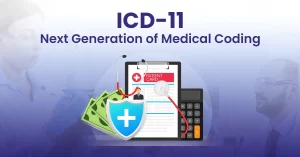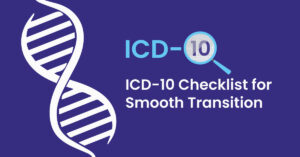The Medicare Outpatient Code Editor or OCE is a software that looks for mistakes in coding when processing bills from outpatient hospitals. It also ensures that all outpatient claims sent to Medicare adhere to the relevant coding guidelines.
As outpatient claims enter the system, the OCE systematically checks for compliance with the following NCCI edits:
1). code pair edits with column 1 and 2 [1];
2). mutually exclusive edits [2];
3). medically unlikely edits [3].
These pre-programmed rules identify code pairs that should not be billed together, codes that cannot logically occur together, and maximum allowed services for certain CPT/HCPCS codes.
Outpatient Code Editor also gives each covered service an APC number and sends info to a pricing program.
Hospitals, surgery centers, and clinics often run OCE before submitting claims. It is because it inspects modifiers, diagnosis codes, procedure codes, and more to catch issues in outpatient claims submitted to Medicare. Using OCE helps providers avoid billing errors, and denials, and get proper payment for their outpatient services.
What Advantages Do OCE Edits Offer To Outpatient Providers?
The Medicare Outpatient Code Editor acts as a watchful protector in the complicated world of outpatient billing. It is designed to examine claims thoroughly, ensuring providers follow coding rules and avoid mistakes. By systematically evaluating code combinations, identifying mutually exclusive procedures, and enforcing medically unlikely limits, the OCE enables providers to submit precise claims, avoid rejections, and receive rightful payment for their important outpatient services.
Now we will explore how each part of the OCE contributes to this vital mission.
1). OCE helps avoid overbilling, and here’s how:
The Outpatient Coding Editor protects providers by carefully reviewing the NCCI’s edit called the Code Pair Edits with Columns 1 and 2.
Here the OCE edits stop incompatible codes from being billed together. One code comes from Column 1, the main procedure. The other code is from Column 2, an ancillary procedure. The OCE looks at how these codes connect. If the two don’t match, it raises a red flag. This prevents mistakes in billing.
For instance, say a patient undergoes both a diagnostic test (Column 1) and a therapeutic procedure (Column 2) during the same encounter. The OCE will flag this combination for review.
This helps avoid overbilling or double-counting services. Thereby, stopping outpatient claims from being denied or fined.
2). OCE ensures error-free outpatient billing, and here’s how:
The OCE aids healthcare providers greatly by strictly addressing an NCCI’s edit called the Mutually Exclusive Edits.
These edits address medical services or procedures that cannot logically occur together in one patient appointment. When two codes can’t happen together, they show different ways to treat the same sickness. So the Editor identifies such mutually exclusive pairs and prompts providers to select the most applicable code.
For instance, if a patient undergoes both open surgery and a minimally invasive scope procedure for the same diagnosis, the Editor will flag the discrepancy.
Here, there are two advantages that OCE provides to doctors: First, accurate billing results from blocking claims with contradictory services. Second, physicians choose the most clinically relevant option, improving patient welfare.
3). OCE aids providers to secure fair reimbursements, and here’s how:
Another way that the OCE supports healthcare organizations is by closely following the NCCI’s guidelines around Medically Unlikely Edits. These edits determine maximum frequencies for services in a given timeframe based on clinical norms and statistics. For instance, billing for a procedure multiple times when it is generally performed once per visit raises a red flag.
Scrutinizing claims for improbable scenarios helps prevent inflated charges for services of limited need. The coding editor promotes judicious use of resources and discourages unnecessary repetition of procedures.
By adhering to Medically Unlikely Edits, providers can optimize their reimbursements while maintaining quality patient care.
3 Different Scenarios And Examples Of OCE Edits
When attending to those not admitted as inpatients, Medicare administrators send in the Outpatient Code Editor to confirm costs and greenlight reimbursement.
Via a trio of real-world examples, we’ll witness how OCE ensures billers charge the right amounts, prevents blunders that burn money, and allows doctors to pocket the reimbursement they’ve earned for treating patients beyond inpatient facilities.
Example #1
Code Pair Edits with Column 1 and 2:
Scenario:
Imagine a patient undergoes both a colonoscopy (Column 1) to screen for colorectal cancer and a biopsy of a polyp (Column 2) during the same outpatient visit.
Explanation:
The NCCI edit flags this combination because a colonoscopy typically includes the biopsy procedure if a polyp is found. Billing both separately would be redundant. Providers should choose the appropriate code that includes both services.
Example #2
Mutually Exclusive Edits:
Scenario:
Consider a patient with a fractured wrist. The orthopedic surgeon performs both an open reduction and internal fixation (ORIF) (Column 1) and a closed reduction with casting (Column 2) during the same encounter.
Explanation:
These procedures are mutually exclusive because they represent different approaches to treating the same fracture. Providers should select either the ORIF code or the closed reduction code, not both. OCE ensures accurate reporting based on the chosen method.
Example #3
Medically Unlikely Edits:
Scenario:
Suppose a patient receives 20 units of physical therapy (Column 1) in a single session for a sprained ankle.
Explanation:
“Medically Unlikely Edits” set reasonable limits. Billing 20 units of physical therapy for a single ankle injury exceeds typical clinical practice. OCE alerts providers to reconsider the quantity, ensuring appropriate billing and resource utilization.
How OCE Works In Claim Scrubbing?
OCE edits work by processing outpatient facility claims, identifying errors through data editing, returning edit flags to indicate necessary actions, referencing specific coding systems, and incorporating NCCI edits to ensure accuracy and consistency in the claim scrubbing process.

Here is a step-by-step breakdown of how OCE edits work in the outpatient claim scrubbing process:
Data Input
The OCE program processes claims for all outpatient institutional providers, including hospitals subject to the Outpatient Prospective Payment System (OPPS) and hospitals not. Collecting all necessary demographic data plus all services provided represents each claim.
Data Editing
The OCE performs three significant functions: editing the data to identify errors, assigning an Ambulatory Payment Classification (APC) number for each service covered under OPPS, and assigning an Ambulatory Surgical Center (ASC) payment group for services on claims from certain non-OPPS hospitals. The OCE identifies individual errors and indicates what actions should be taken and why these actions are necessary.
Edit Flags
To accommodate this functionality, the OCE is structured to return lists of edit numbers. This structure facilitates the linkage between the actions being taken, the reasons for the actions, and the information on the claim that caused the action.
Coding Systems
The OCE performs all functions that require specific reference to HCPCS codes, HCPCS modifiers, and ICD-9-CM diagnosis codes. Since these coding systems are complex and annually updated, centralizing the direct reference to these codes and modifiers in a single program reduces effort and the chance of inconsistent processing.
Diagnosis Codes: The OCE verifies that the diagnosis codes reported on the claim are valid and supported by the documented medical record. It ensures that the codes are specific and accurately represent the patient’s condition.
Procedure Codes: The OCE checks the procedure codes reported on the claim to ensure they are valid and appropriate for the services provided. It verifies that the codes are consistent with the patient’s diagnosis and the documented medical record.
Modifiers
The OCE validates modifiers, which provide additional information about the services rendered. It ensures that the modifiers are used correctly and under the coding guidelines.
Achieve OCE Compliance and Coding Accuracy with BellMedEx
Submit clean claims and avoid OCE denials with an expert 3rd party medical billing company like BellMedEx.
Our AHIMA and AAPC certified coders audit all outpatient medical charts to ensure adherence to NCCI code pair edits, mutually exclusive code guidelines, and medically unlikely claim rules before the claim submission step.
This safeguards a provider’s revenue from rejections due to unbundling, overlapping services, or unlikely coding combinations.





